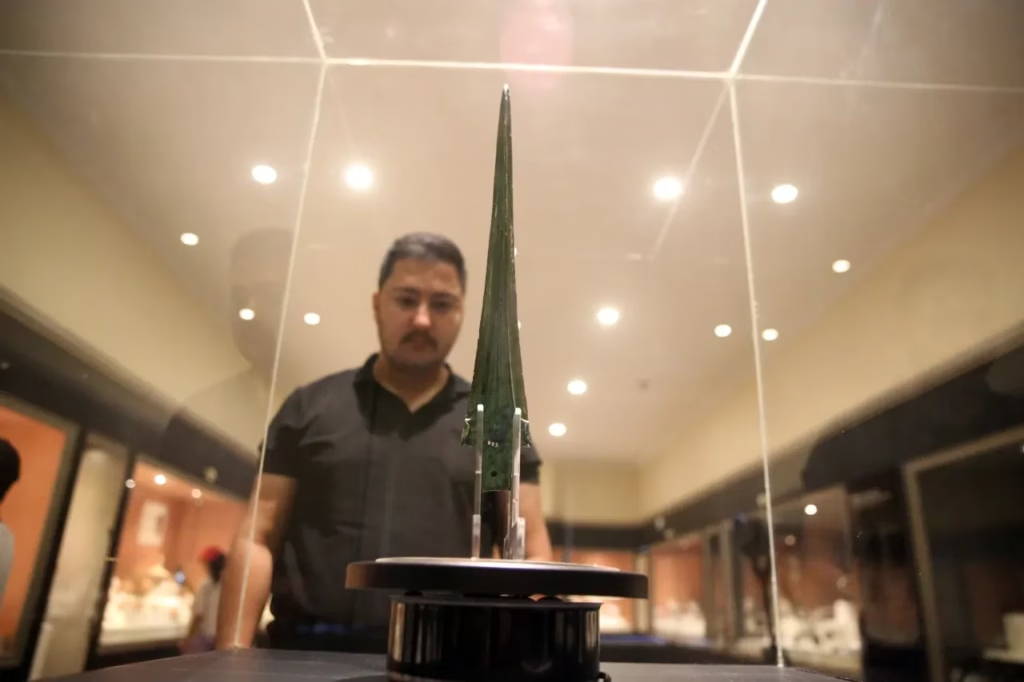A rare bronze sword dating back 3,500 years to the Hittite civilization is now on public display at Kastamonu Museum in northern Turkey. The artifact is part of a newly opened bronze exhibition titled “102 Exhibitions for the 102nd Anniversary: A Journey Through Anatolia’s Cultural Heritage in the Light of the Republic.”
Measuring 42 centimeters in length and 6 centimeters in width, the sword stands out for its exceptional symmetry and advanced casting technique — a remarkable feat for its time.
Discovered in 1992, Now Revealing Ancient History
The sword was discovered during a surface survey in 1992 in Pınarbaşı, a district of Kastamonu Province. According to Erol Kale, Director of Kastamonu Museum, only a few such swords exist worldwide, making it a rare and invaluable piece of Anatolian heritage.
“This sword is not just a weapon. It’s a testament to the advanced craftsmanship and reach of the Hittite Empire,” Kale emphasized.

The artifact strongly suggests that the Hittite presence extended further across northern Anatolia than previously thought. Additional excavations in the Devrekani district support this idea, revealing further signs of ancient settlement.
A Landmark Exhibition in a Historic Building
Housed in a beautifully preserved building dating back to 1911, Kastamonu Museum holds an impressive collection:
- 31,952 coins
- 6,046 ethnographic objects
- 1,888 archaeological artifacts
The bronze sword is one of 52 newly displayed pieces in the special exhibition, many of which are being shown to the public for the first time. Visitors have responded with great enthusiasm, making the exhibition a cultural highlight of the season.

Global Significance for Hittite and Anatolian History
This exhibition — part of Turkey’s Ministry of Culture and Tourism’s national project celebrating the 102nd anniversary of the Republic — aims to spotlight the deep historical roots of Anatolia. The Hittite sword is particularly significant as it connects modern-day Turkey with one of the most powerful civilizations of the ancient Near East.





